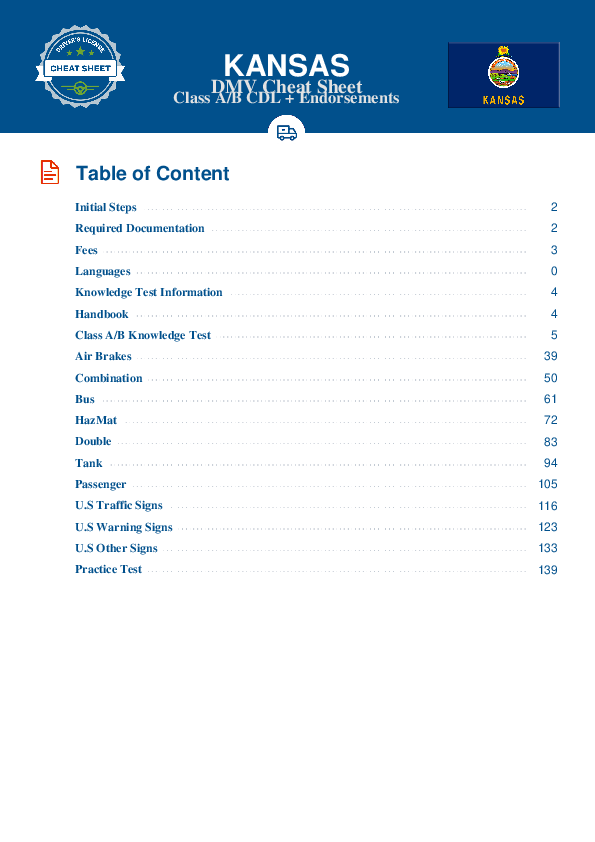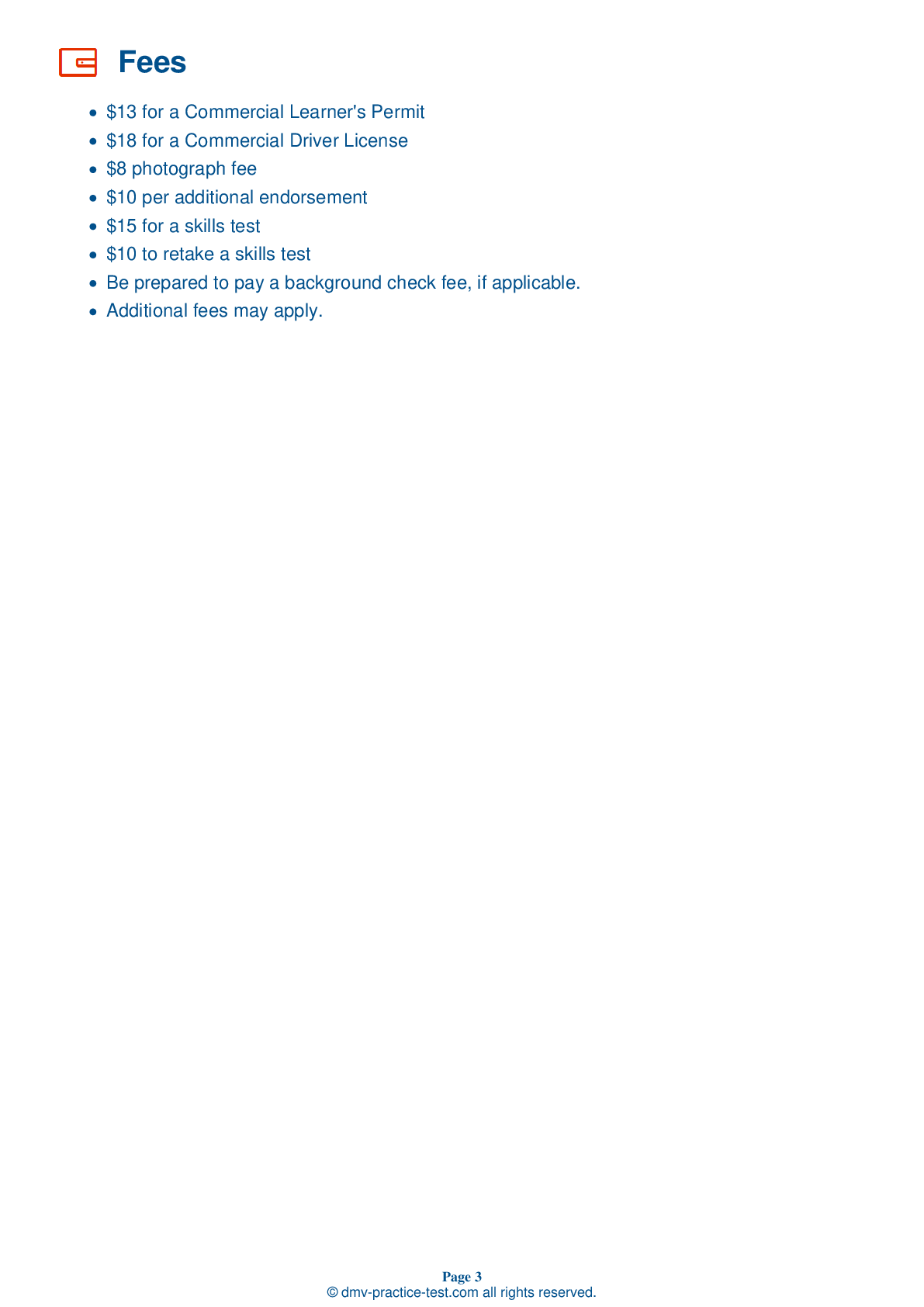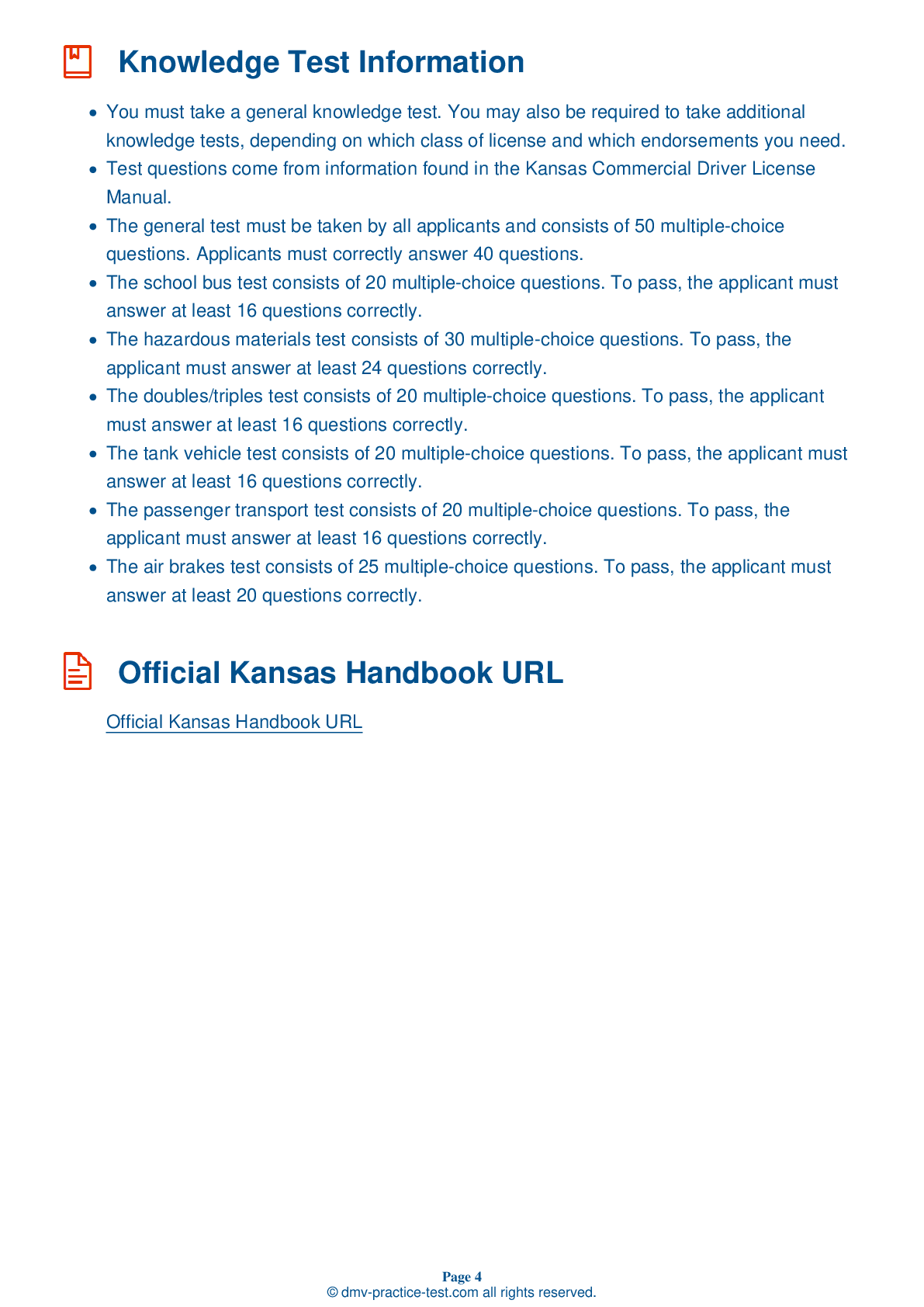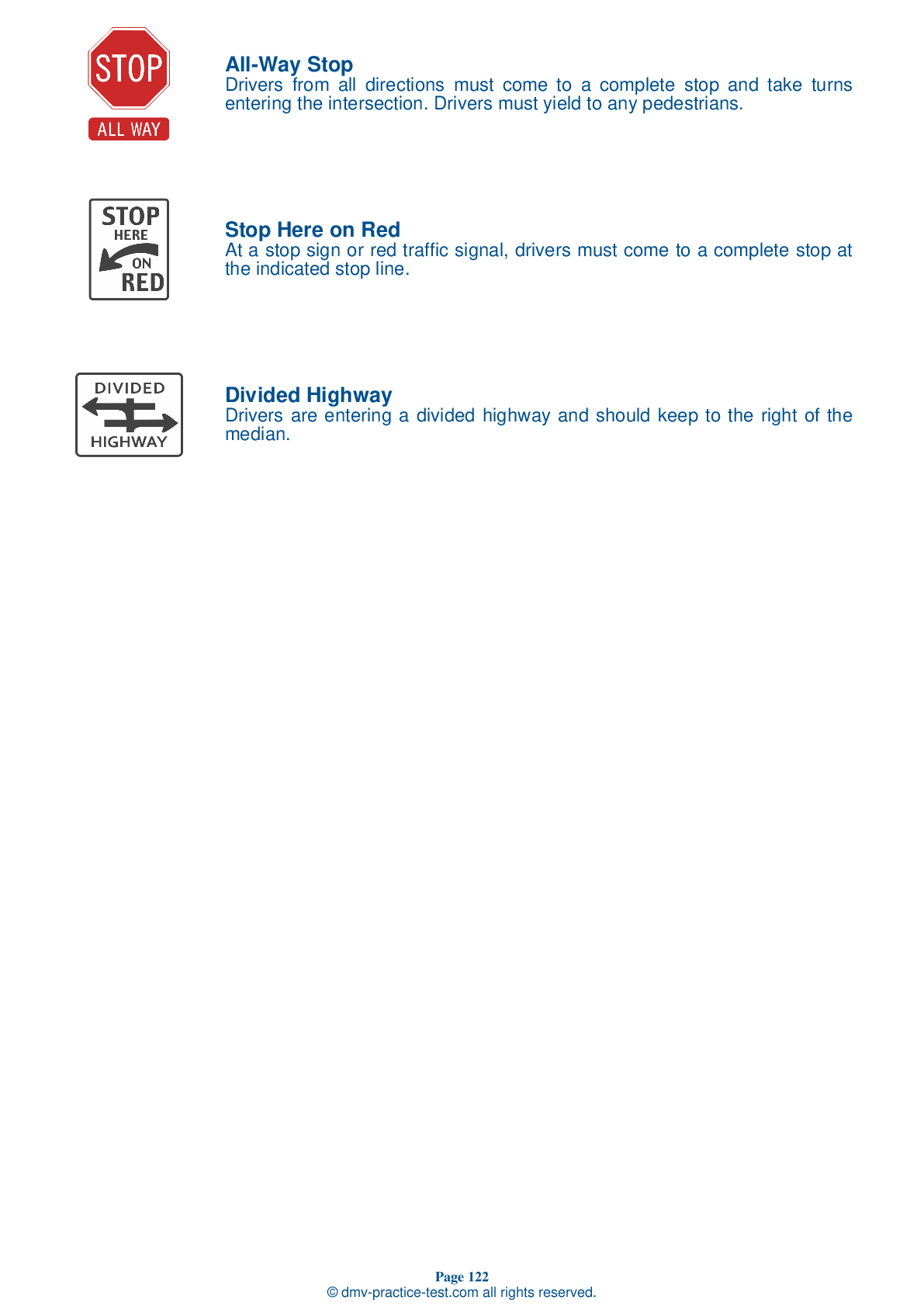Class B Driving Test | Kansas 2025 #2
Train for FREE online with our Kansas class B license test. The official exam test consists of several obligatory parts, with all of them checking your knowledge of different blocks of road rules. If you need to obtain a KS CDL class B permit in 2025, practice as much as possible. Free sample tests published on our website will help you check and improve your knowledge and boost your grades. Please bear in mind that CDL class B requirements may vary from state to state.
1 . During a static leakage test, the maximum leakage rate for a single vehicle with air brakes is ____ in one minute.
When performing a static leakage test on a single vehicle with air brakes, the leakage rate should be no more than 2 psi in a minute. If air leaks from the air brake system at a quicker rate, the vehicle should not be driven because something likely needs to be repaired.
2 . When you press the brake pedal in a vehicle with S-cam brakes, air pressure pushes out the rod and moves the:
When pressing the brake pedal in a vehicle with S-cam brakes, air will enter the brake chambers. The added air pressure will push out the rods and move slack adjusters, twisting the brake camshafts.
3 . If unsure if a road is becoming icy, a driver can:
If you think the road surface may be becoming icy, you can check for ice on your vehicle by opening the window and feeling the front of the side mirror, mirror support, or antenna. If ice has formed on any of these items, the road is likely becoming icy as well.
4 . Cargo on flatbed trailers should be:
Cargo on flatbed trailers or trailers without sides must be tied down to prevent it from shifting or falling in transit.
5 . A suspension system:
Suspension systems receive weight capacity ratings, given by the manufacturers.
6 . How much water is needed on a road surface for a vehicle to hydroplane?
Hydroplaning is an effect in which a vehicle's tires lose traction with the surface of the road and instead glide along a layer of water. There does not have to be much water on the road for this to occur.
7 . Once stopped as a part of the stop/start maneuver, you should:
Once you have stopped as a part of the stop/start maneuver during the on-road driving skills test, you must activate your four-way flashers and shift into neutral or park. You must not block any driveways, intersections, fire hydrants, or signs.
See the exact questions that will be on the 2025 Kansas DMV exam.
99.2% of people who use the cheat sheet pass the FIRST TIME
Lillian MCcranie explains how our CDL study guide was helpful in passing the exam and recommends it to everyone.
Cameron tells us how he purchased the CDL exam, and found it to be a useful tool which helped him pass the exam and find a job.



